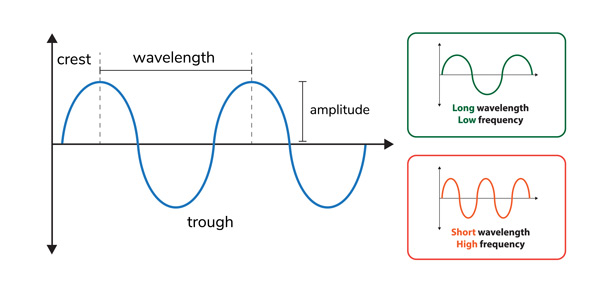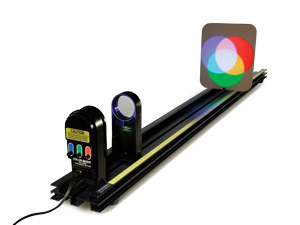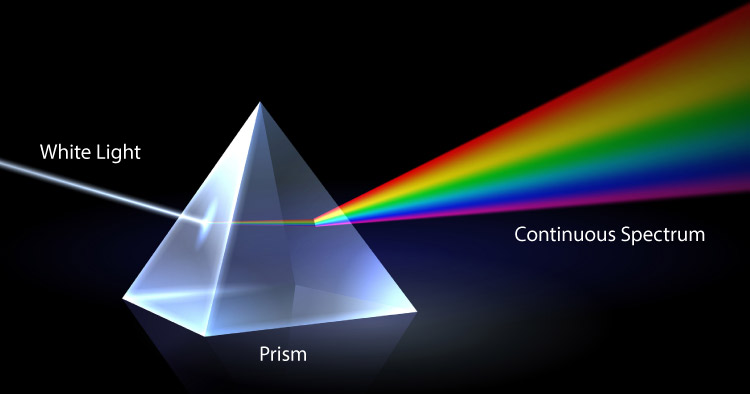What is Sunlight?

Sunlight has shaped our planet’s atmosphere over billions of years and has driven the evolution of nearly every species on Earth, not to mention giving us the occasional sunburn. But what is sunlight made of?
What is Sunlight?
Sunlight is electromagnetic radiation, or energy, that is emitted by the Sun. It consists of visible, infrared, and ultraviolet light.
Properties of Light
All light, regardless of its source, behaves in a similar way. It has both wave-like and particle-like properties, which means that it can be described both as a wave and as a stream of particles called photons.
The wave-like properties of light can be described in terms of its wavelength, frequency, and amplitude. The wavelength of light is the distance between two successive peaks or troughs in the wave, and the frequency is the number of waves that pass a given point per second. The amplitude of the wave is a measure of the intensity or brightness of the light.

The particle-like properties of light can be described in terms of the energy and momentum of photons. Photons are particles of light that have zero mass (which is why light is not considered matter). The energy of a photon is proportional to its frequency, while its momentum is proportional to its wavelength. The frequency and wavelength dictate where the light falls on the color spectrum.
During a solar eclipse, when sunlight is blocked momentarily from reaching Earth, the loss of this light energy is tangible; visit our eclipse page to view upcoming dates and discover how a brief loss of sunlight can affect everything from the sky's appearance to weather patterns!
How Light Interacts with Objects
Light interacts with matter in a variety of ways. When light passes through a material, it can be absorbed, reflected, or transmitted. How the light reacts depends on its frequency and the properties of the material. These interactions can be beneficial to scientists, who use methods such as spectroscopy to assess samples of matter.

For example, plant leaves absorb, reflect, and transmit light. Plants contain chlorophyll, a pigment that absorbs sunlight and stores its energy as glucose. The green color of plants is caused by pigments, such as chlorophyll, reflecting the green light into our eyes, while absorbing the red and blue light. And finally, some light passes completely through leaves, which you’ve likely noticed if you’ve ever looked up from beneath a tree on a sunny day.

In addition to its classical properties, light also exhibits a number of quantum mechanical phenomena, such as interference, diffraction, refraction, and polarization. These phenomena are a consequence of the wave-particle duality of light and are essential to our understanding of many aspects of modern physics, including quantum mechanics and the nature of matter.
For instance, light interference occurs in soap bubbles, giving them their rainbow coloration. Refraction is the reason why your straw looks crooked beneath the water in your glass, since light bends as it passes through different mediums. Refraction also happens when sunlight travels through space and into our atmosphere, so in reality we see a “sunrise” before the Sun is actually visible above the horizon!

Colors of Light
The colors of light that we see are a result of the way that light interacts with our eyes and our brain. Different wavelengths and frequencies of light are responsible for different colors. The visible spectrum is composed of the colors of the rainbow: red, orange, yellow, green, blue, indigo, and violet. Red has the longest wavelength, and violet has the shortest.
Explore light, color, and shadows with the PASCO Color Mixer!

PASCO Color Mixer (OS-8496)
- Create amazing demonstrations of additive color mixing.
- Individually adjust the red, blue, and green LEDs to investigate different color combinations.
- Add the Color Mixer Accessory Kit to explore additional activities, including absorption, transmission, and subtractive color mixing.
| Learn more |
Colors that are most visible to the human eye include:
- Yellow: Yellow is the most visible color from a distance and is the easiest color to see in low light conditions. This is why it is often used for caution signs, road markings, and emergency vehicles.
- Green: Green is also highly visible and easy to see, particularly in bright daylight. It is often used for directional signs and traffic signals.
- Red: Red is a highly visible color that is easy to see in well-lit conditions. It is often used for warning signs and emergency signals.
Colors that are the least visible to the human eye include:
- Blue: Blue is a relatively dark color and can be difficult to see in low light conditions. It is also the most difficult color to focus on because of the way that the human eye processes blue light.
- Purple: Like blue, purple can be difficult to see in low light conditions, and it can also be difficult to distinguish from other colors, particularly blue.
- Brown: Brown is a relatively low-contrast color that can blend in with many backgrounds, making it difficult to see in some situations.
If you have placed a prism in the sun, then you have likely noticed the rainbow effect it produces. This is because white light is a mixture of all the colors of the visible spectrum, and when it passes through a prism, it is separated–or diffracted–into its component colors. This is because the different colors of light refract or bend at different angles as they pass through the prism or grating, causing them to separate.

Ultraviolet and Infrared Light
Sunlight is composed of visible, infrared, and ultraviolet light. Ultraviolet and infrared light are portions of the electromagnetic spectrum that are invisible, yet harmful, to the human eye. Exposure to ultraviolet or infrared radiation can cause lasting vision damage, or even blindness, which is why solar eclipses are viewed using the special filters built into eclipse glasses. Ultraviolet light has a shorter wavelength than violet light, and infrared light has a longer wavelength than red. Some animals—including butterflies, bees, vampire bats, and some snakes—can see colors in the ultraviolet or infrared range.
Ultimately, sunlight is a type of electromagnetic radiation, or energy, packaged in the form of protons. Though they're produced nearly 93 million miles away, these protons play a central role in shaping life on Earth—from fueling photosynthesis to illuminating rainbows.





